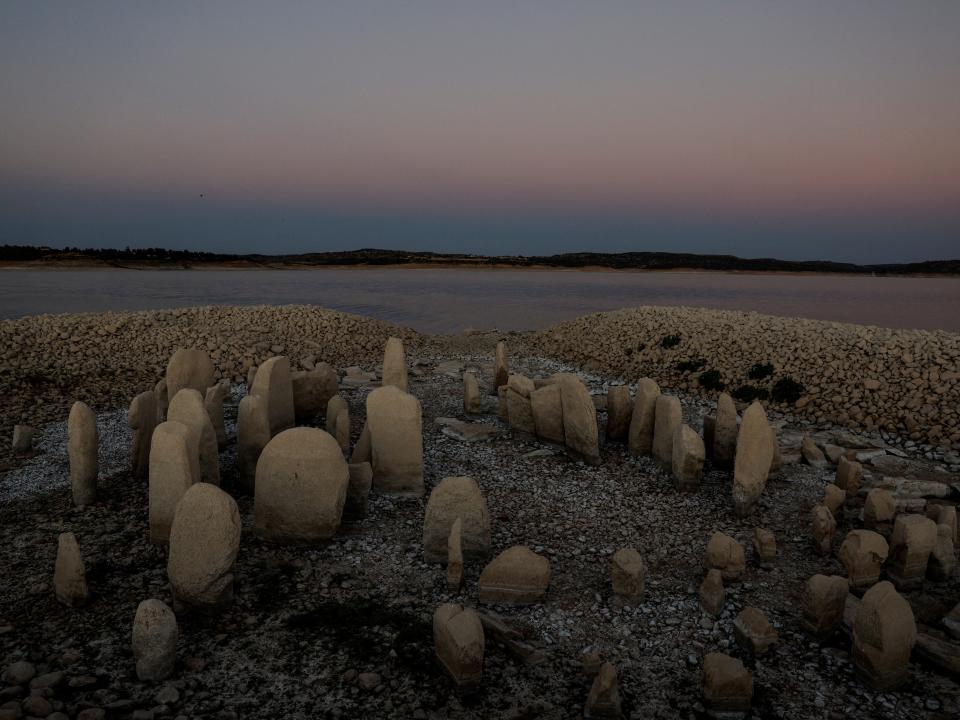Photos of a Nazi fleet of ships sunk in World War II that have resurfaced in Europe's drought

Dozens of warships of Hitler's Black Sea fleet were scuttled in 1944 in the Danube river.
10,000 explosive devices hidden within the exposed wreckage, said a Serbian minister.
Europe's drought is bringing history back to the surface.
Extreme droughts across Europe are revealing thousands of years of lost history.
Most dramatic is the Nazi fleet of 20 World War German warships that re-surfaced as the water level in the River Danube in Serbia plummeted due to the soaring temperatures and lack of rain.

Hitler's Black Sea fleet was scuttled in 1944 as the German army retreated from Soviet forces, Reuters report.
Strewn across the Danube riverbed, some of the Nazi hulks still boast guns, turrets, command bridges, and broken masts said Reuters.
According to The Washington Post, many more ships are thought to be buried under the river's sandbanks.

Talking to local media, junior Serbian transport minister Belimir Trajilović said that roughly 10,000 explosive devices are hidden within the exposed wreckage.
Across Europe, more lost history is being uncovered by the continental drought.
In Spain, the Valdecanas reservoir has dried up and revealed a prehistoric stone circle dubbed the "Spanish Stonehenge," officially known as the Dolmen of Guadalperal.

It was discovered in 1926 but has been covered by water since 1963. It has only been fully exposed four times since, but it is again visible as authorities say the water level has dropped to 28% of capacity, Reuters reports.
In Germany, medieval "hunger stones" are revealed in dried-up rivers. The stones mark how low water levels got in previous devastating droughts.
Researchers said the markings express that "drought had brought a bad harvest, lack of food, high prices and hunger for poor people."

Wenn du mich siehst, dann weine ("If you see me, then weep"), reads an inscription on a rock in the Elbe River near the northern Czech town of Děčín, close to the German border, The Guardian reports. Another in Germany says, "When this goes under, life will become more colorful again."
In Italy's River Po, the heat exposed a 1,000-pound WWII bomb dropped, and 3,000 residents were evacuated while bomb disposal carried out a controlled explosion of the U.S.-manufactured device.
In the parched Lake Como, northern Italy, the 100,000-year-old skull of a deer and the remains of hyenas, lions, and rhinos have been uncovered, according to The Guardian.
Read the original article on Business Insider

